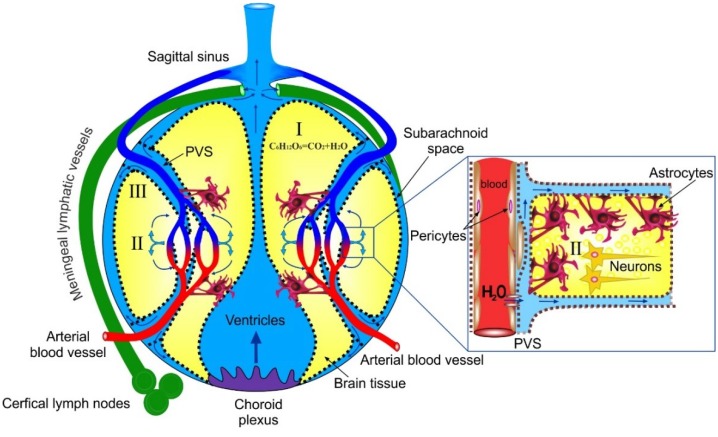Figure 1.
Schematic illustration of three models of generation and pathways of interstitial fluid (ISF) in the brain. Model I explains the formation of ISF (10% of the total volume of ISF) as a result of metabolic oxidation of glucose to carbon dioxide and water; Model II explains the generation of ISF as a large fraction of cerebral capillary secretion of solutes, which are driven passively by the ionic gradient through the endothelial cell membranes (blue arrows) or via the tight junctions of (blood-brain barrier (BBB) and formed perivascular space (PVS—enlarged figure; arrows show movement of ISF) around penetrating arteries, venules, and veins, and connecting with glia-lines boundaries between neuropil and regions of axon tracts; Model III explains ISF as a fraction of recycled cerebral spinal fluid (CSF), which flows from the choroid plexus into the subarachnoid space and then into PVS where CSF is merged with ISF generated by cerebral capillaries.

